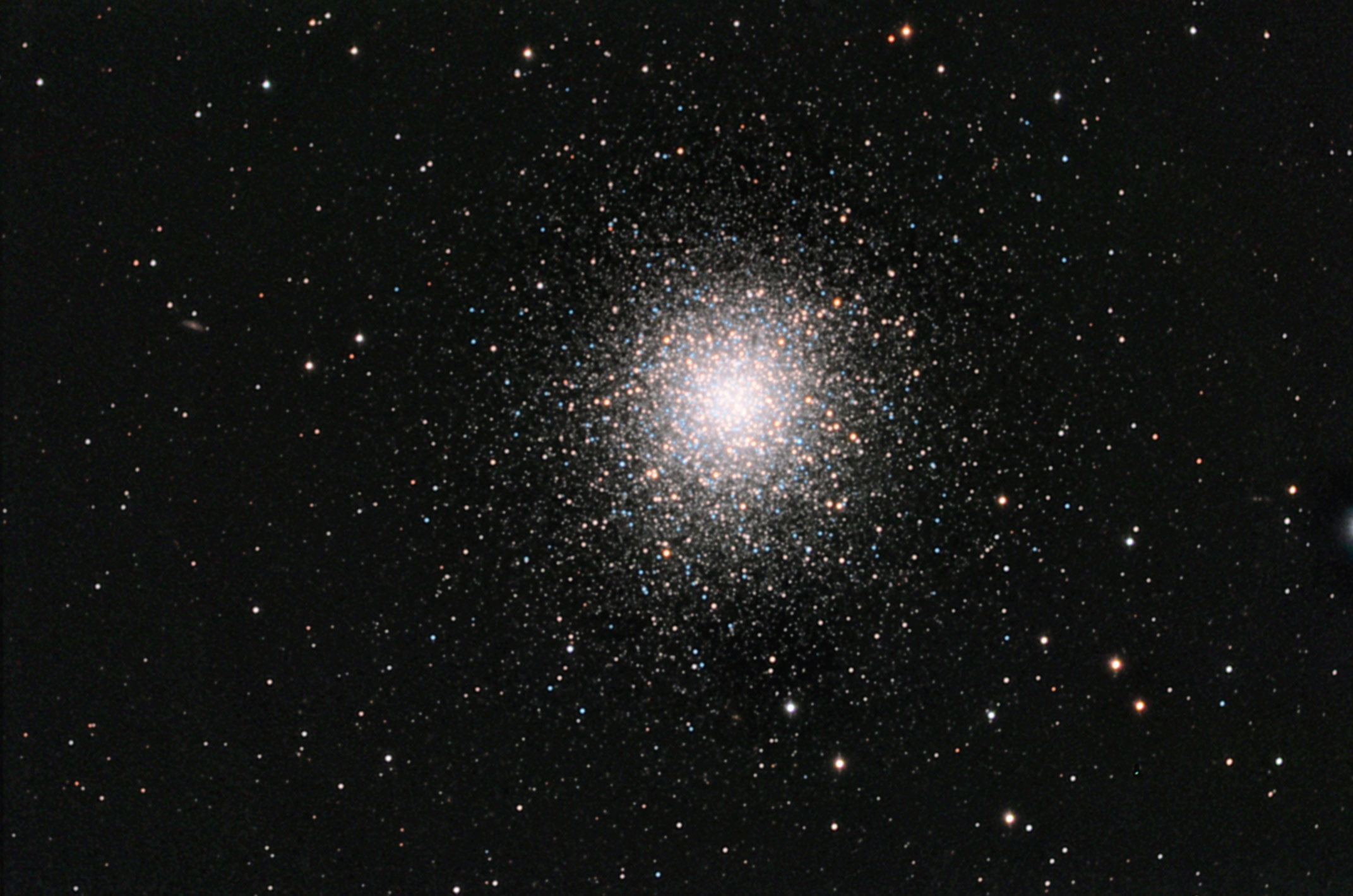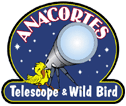News
Kiss the Sky Tonight -- Month of July 2022

Welcome to the night sky report for July 2022 -- Your guide to the constellations, deep sky objects, planets, and celestial events that are observable during the month. The naked-eye planets of dawn – Venus, Mars, Jupiter, and Saturn – dominate the sky this July, appearing more spread out each morning. In July, find the constellation Scorpius to identify the reddish supergiant star Antares, which will lead you to the globular star cluster M4 (NGC 6121). M22 (NGC 6656), in the constellation Sagitarius, another globular cluster, is one of the brightest clusters in the sky and is visible with the naked eye. Keep observing around the group of stars commonly known as the Teapot and you’ll be looking toward the center of the Milky Way. In that direction, you can see the Lagoon Nebula (M8, NGC 6523), the Omega Nebula (M17, NGC 6618), and the Trifid Nebula (M20, NGC 6514). Next, if you're feeling the July heat, note the origin of phrase "the dog days" of summer, which has to do with the bright star Sirius, also known as the “Dog Star.” The night sky is truly a celestial showcase. Get outside and explore its wonders from your own backyard.
Can Seeds Survive the Harsh, Non-Earth Conditions of Space?
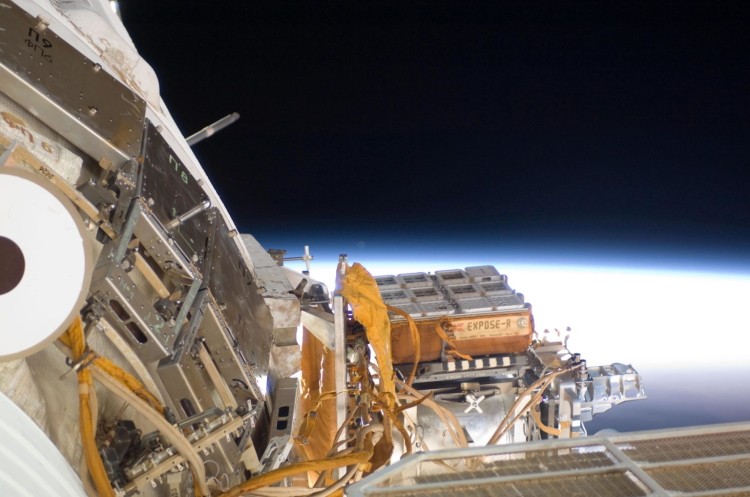
The conditions in the vacuum of space are quite harsh compared to Earth and seeds in space must be able to withstand large doses of ultraviolet and cosmic radiation, low pressure, and microgravity. In 1946, NASA launched a V-2 rocket carrying maize seeds to observe how they’d be affected by radiation. Surprisingly, seeds were the first Earth life form to travel into space. Since then, the scientific community has learned a great deal about the effects of the space environment on seed germination, metabolism, genetics, biochemistry and even seed production. Astrobiologists have investigated how seeds would do back on Earth after spending extended periods on the International Space Station (ISS). The experiments they conducted on the EXPOSE missions were much longer than many other ISS seed experiments, lasting up to 682 days at a time, with the seeds placed on the outside of the station in the dead of space, rather than inside. Their goal was to understand not only the effects of long-term radiation exposure, but a bit about the molecular mechanisms of those effects.
NASA’s Artemis Program – Gateway to the Moon… Steppingstone to Mars

Artemis is the first step in the next era of human exploration. Together with commercial and international partners, NASA will establish a sustainable presence on the Moon to prepare for missions to Mars. Artemis 1, planned for liftoff later this year, will be the first integrated test of NASA’s deep space exploration systems: the Orion spacecraft, Space Launch System (SLS) rocket, and the ground systems at Kennedy Space Center in Cape Canaveral, Florida. The first in a series of increasingly complex missions, Artemis 1 will be an uncrewed flight test that will provide a foundation for human deep space exploration, and demonstrate our commitment and capability to extend human existence to the Moon and beyond. During this flight, the spacecraft will launch on the most powerful rocket in the world and fly farther than any spacecraft built for humans has ever flown. It will travel 280,000 miles from Earth, thousands of miles beyond the Moon over the course of about a four to six-week mission. Orion will stay in space longer than any ship for astronauts has done without docking to a space station and return home faster and hotter than ever before.
Soon 1 Out of Every 15 Points of Light in the Sky Will Be a Satellite

In the not too distant future, it is expected that 65,000 satellites will be in Low Earth Orbit if the plans filed by four mega-constellation internet companies [SpaceX Starlink and Amazon Kuiper (United States), OneWeb (United Kingdom), and StarNet/GW (China)] are implemented. Currently, satellites placed in Low Earth Orbit, are almost completely unregulated – It’s like the wild, wild, west. New simulations show that from everywhere in the world, in every season, there will be dozens to hundreds of satellites visible for at least an hour before sunrise and after sunset. Right now, it’s relatively easy to escape urban light pollution by travelling to rural areas with dark skies. But these simulations show that in the future you won’t be able to escape this new satellite light pollution anywhere on Earth…Not even at the North Pole.
Kiss the Sky Tonight -- Month of June 2022

Welcome to the night sky report for June 2022 -- Your guide to the constellations, deep sky objects, planets, and celestial events that are observable during the month. Though the nights are shorter in June, they are filled with fine sights. Look for the Hercules constellation, which will lead you to a globular star cluster with hundreds of thousands of densely packed stars. Globular cluster M13 (the Hercules Cluster, NGC 6205) is best observed with a telescope, but binoculars will reveal it as a fuzzy spot. You can also spot Draco the dragon, which will point you to the Cat’s Eye Nebula (C6, NGC 6543). The morning quartet of Jupiter, Saturn, Venus, and Mars continues to shine, though they will spread farther apart over the next couple of months. And the constellation Lyra is easily located thanks to its brightest star, Vega.
The Hypatia Stone is Older than the Solar System and Harder than a Diamond – Was it Expelled in a Type Ia Supernova Explosion?

In 2013 researchers at the University of Johannesburg in South Africa announced that the Hypatia Stone found in the desert of south-west Egypt was definitely not from Earth. By 2015, other research teams found exotic micro-mineral compounds in the Hypatia Stone that are not known to occur on Earth, elsewhere in our Solar System, or in known meteorites or comets. So, what is the origin of this stone and could the minerals in it provide clues as to where it came from? Now, a new study indicates that the Hypatia Stone could be the first tangible evidence found on Earth of a Type Ia Supernova explosion. These rare supernovas are some of the most energetic events in the Universe and occur only once or twice per galaxy per century.
Astronomers Reveal the First Image of the Bad Boy at the Center of Our Galaxy
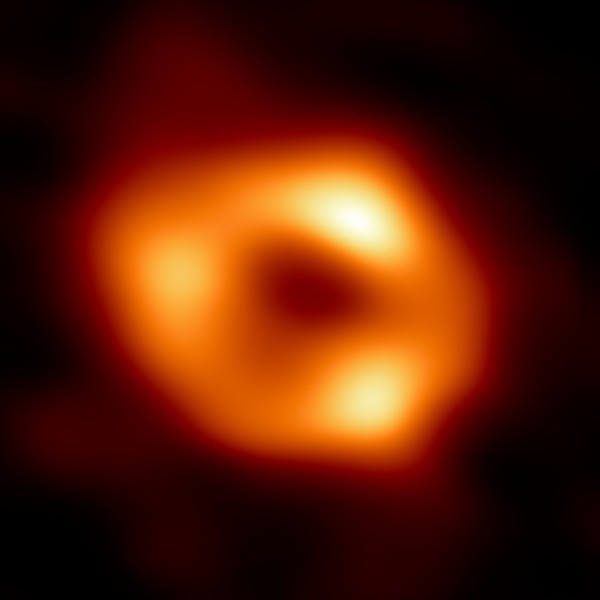
Today, astronomers unveiled the first image of the supermassive black hole at the center of our Milky Way galaxy. This result provides overwhelming evidence that the object is indeed a black hole and yields valuable clues about the workings of such giants, which are thought to reside at the center of most galaxies. The image was produced by a global research team called the Event Horizon Telescope (EHT) Collaboration, using observations from a worldwide network of radio telescopes. Although we cannot see the black hole’s event horizon because it cannot emit light, the glowing gas orbiting around the black hole reveals a telltale signature: a dark central region (called a “shadow”) surrounded by a bright ring-like structure. The view captures light bent by the powerful gravity of the black hole, which is four million times more massive than our Sun.
When Theory Collides With Reality at the LHC – Is the Standard Model of Physics Broken?

Despite its success at explaining the Universe, the Standard Model of Particle Physics does have limits. Results from Fermilab, Brookhaven, and CERN over the years have shown evidence that our best theoretical model of the subatomic world may be incomplete. According to the Standard Model, all ordinary matter, including every atom in the periodic table of elements, consists of only three types of matter particles: up and down quarks (which make up the protons and neutrons in the nucleus) and leptons (which include the electrons that surround the nucleus). The model also explains how force carrying particles, which belong to a broader group of bosons, influence the quarks and leptons. The Standard Model also explains three of the four fundamental forces that govern the Universe: electromagnetism, the strong force, and the weak force. The fourth fundamental force, gravity, regrettably, is not adequately explained by the Standard Model. That’s basically it. Recently, a series of more precise measurements of these already known standard particles and processes have produced results that threatening to shake up physics… And with the Large Hadron Collider getting ready to run at a higher energy and intensity level than ever before, it is time to start discussing the implications, which may result in some new physics.
Kiss the Sky Tonight -- Month of May 2022
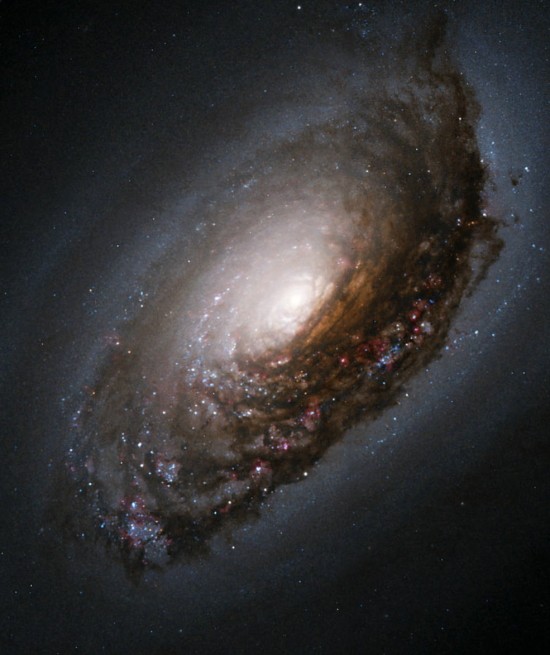
Welcome to the night sky report for May 2022 -- Your guide to the constellations, deep sky objects, planets, and celestial events that are observable during the month. In May, we are looking away from the crowded, dusty plane of our own galaxy toward a region where the sky is brimming with distant galaxies. Locate Virgo to find a concentration of roughly 2000 galaxies and search for Coma Berenices to identify many more. Coma Berenices is a great target for binoculars. Look for galaxies like M104 (Sombrero Galaxy), M87 (Virgo A Galaxy), and M64 (Black Eye Galaxy). May also provides for some great planet spotting, including a close conjunction of Jupiter and Mars. At mid-month, a total eclipse of the Moon should delight skywatchers across the Americas, Europe, and Africa. The night sky is truly a celestial showcase. Get outside and explore its wonders from your own backyard and follow the advice of James Marshall Hendrix (aka. Jimi Hendrix -- apparently a fellow admirer of the heavens): "Excuse me while I kiss the sky."
NASA’s Perseverance Rover Captures Amazing Images of Solar Eclipse on Mars
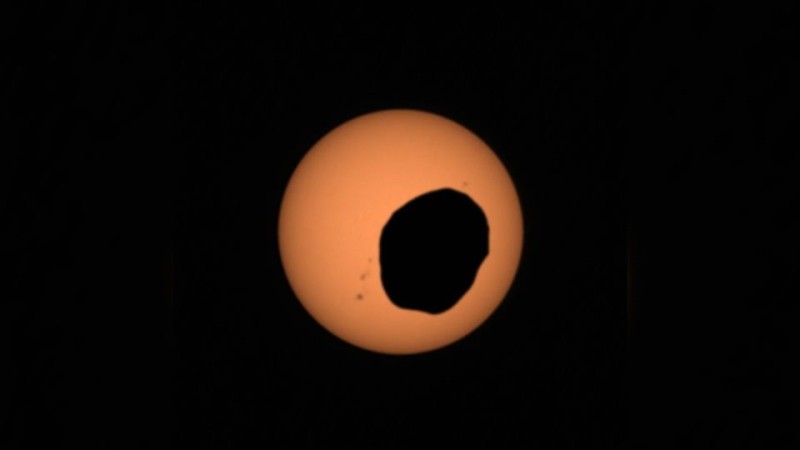
NASA’s Perseverance Mars rover has captured dramatic footage of Phobos, Mars’ potato-shaped moon, crossing the face of the Sun. These observations can help scientists better understand the moon’s orbit and how its gravity pulls on the Martian surface. Captured with Perseverance’s next-generation Mastcam-Z camera, the eclipse lasted a little over 40 seconds – much shorter than a typical solar eclipse involving Earth’s Moon. The images are the latest in a long history of NASA spacecraft capturing solar eclipses on Mars. Back in 2004, the twin NASA rovers Spirit and Opportunity took the first time-lapse photos of Phobos during a solar eclipse. Curiosity then continued the trend with videos shot by its Mastcam camera system. But Perseverance, which landed in February 2021, has provided the most zoomed-in video of a Phobos solar eclipse yet – and at the highest-frame rate ever.
Will We Have to Rewrite Einstein’s Theory of General Relativity?

Einstein labored hard to create the theory of General Relativity, but it is less well known that he also helped to launch Quantum Mechanics, which he didn’t much care for. These two views of the world are the very foundation stones of modern physics. Without them we would not have things such as space travel, medical imaging, GPS systems, or nuclear energy. Uniting the two into a consistent “Theory of Everything” is the single biggest challenge in physics today… and progress is slow.
James Webb Space Telescope – Powerful Successor to NASA’s 32 Year Old Hubble
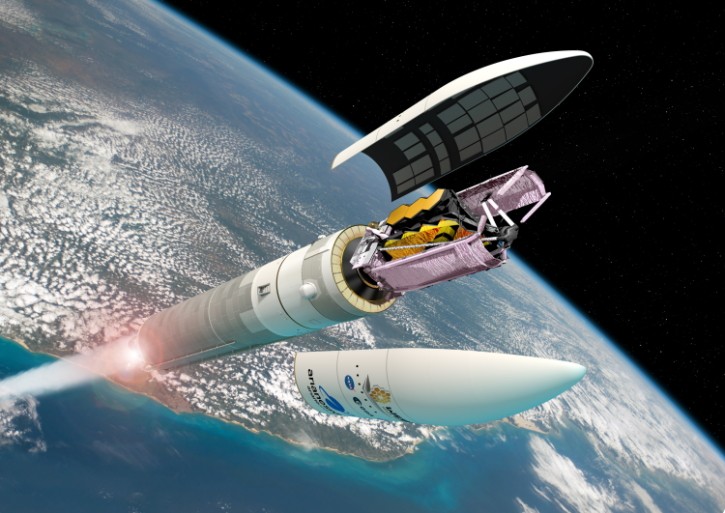
The James Webb Space Telescope (JWST) is successor to the Hubble telescope and the next great space science observatory, designed to answer questions about the Universe and to make breakthrough discoveries in all fields of astronomy. It is the most powerful space telescope ever built and a complex piece of mechanical, optical, and electronic machinery that has pushed the limits of human engineering. On December 25, 2021, after years of delays, the telescope was launched into space to usher in the next era of astronomy. The James Webb Space Telescope is an international partnership between NASA, ESA (European Space Agency), and CSA (Canadian Space Agency).
Kiss the Sky Tonight -- Month of April 2022

Welcome to the night sky report for April 2022 -- Your guide to the constellations, deep sky objects, planets, and celestial events that are observable during the month. Clear April nights are filled with starry creatures. Near the Big Dipper, you will find several interesting binary stars. You can also spot galaxies like the Pinwheel Galaxy (NGC 5457, M101), the Cigar Galaxy (NGC 3034, M82), and M96 (NGC 3368) -- the last of which is an asymmetric galaxy that may have been gravitationally disrupted by encounters with its neighbors. The gathering of planets in the morning sky increases from three to four, as Jupiter joins the party. Two close conjunctions – between Mars and Saturn, and Venus and Jupiter – provide highlights at the beginning and end of the month. And the Big Dipper hosts a surprise: a double star you just might be able to "split" with your own eyes.
A Large Solar Storm Could Knock Out the Power Grid and the Internet
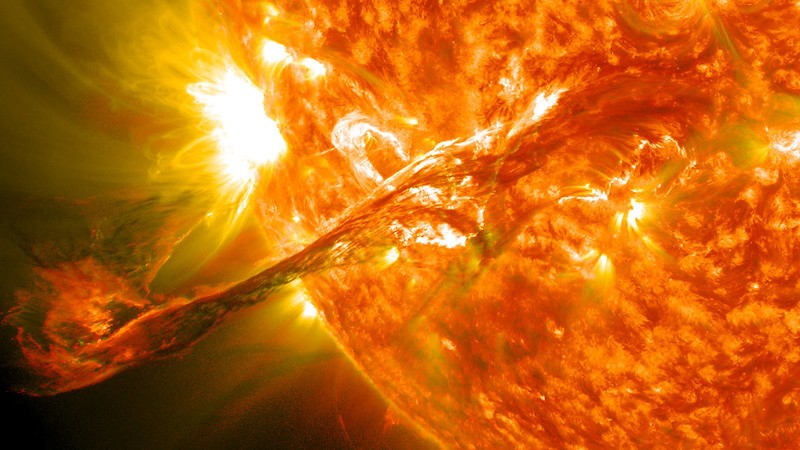
An 1859 solar storm known as the "Carrington Event" caused a great deal of the havoc around the world. The solar flare electrified transmission cables, shocking technicians and setting their telegraph papers on fire. Northern Lights spread as far south as Cuba and Hawaii, with auroras over the Rocky Mountains so bright, that the glow woke campers who began preparing breakfast because they thought it was morning. A repetition of the Carrington Event today would cause extensive social and economic disruptions. Power outages would be accompanied by radio blackouts and satellite malfunctions. Telecommunications, GPS navigation, banking and finance, and transportation would all be affected. Some problems would correct themselves with the fading of the storm -- radio and GPS transmissions could come back online fairly quickly. But other problems would be lasting. A burnt-out multi-ton transformer, for instance, could take weeks or months to repair.
Is Dark Energy Just an Illusion? Neutron Star Collisions May Provide the Answer

Is dark energy just an illusion? The truth is that no one really knows -- More is unknown about dark energy than is known. Many researchers claim to “know” how much dark energy there is due to its apparent affect on the expansion of the Universe. But other than that, it is a complete mystery. If it exists at all, then roughly 68 percent of the Universe should be composed of this mysterious dark energy, with the equally mysterious dark matter making up about 27 percent. The rest -- everything on Earth, everything ever observed in the Universe with all of our instruments, all normal matter -- would add up to less than 5 percent of the Universe. The thing that is needed to decide between dark energy possibilities – be it a property of space, a new dynamic fluid, or a new theory of gravity -- is more and better data. Researchers at the Scuola Internazionale Superiore di Studi Avanzati (SISSA) in Trieste, Italy, have been working on this problem and now have the first simulation of neutron star mergers that reproduce a dark energy-like behavior on cosmological scales. So far, their findings that dark energy is just an illusion are consistent with data acquired by the LIGO and Virgo interferometers during recently captured binary neutron star collisions and may be further tested and supported by next-generation gravitational interferometers, such as the Einstein telescope in Europe and Cosmic Explorer in USA.
Funding Member
Sponsors
- ASTROPHOTOGRAPHY BY MARTIN PUGH
- astronomy-shoppe
- FocusKnobs
- Matsumoto Company
- SellTelescopes.com
- Desert Sky Astro Products
- OMI OPTICS USA LLC
- Anacortes Telescope
- BW
- RemoteSkies.net
- Astromart Customer Service
- Rouz Astro
- Waite Research
- APM-Telescopes
- Bob's Knobs
- AstroMart LLC
- BBLABS LLC
View all sponsors
